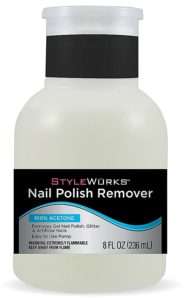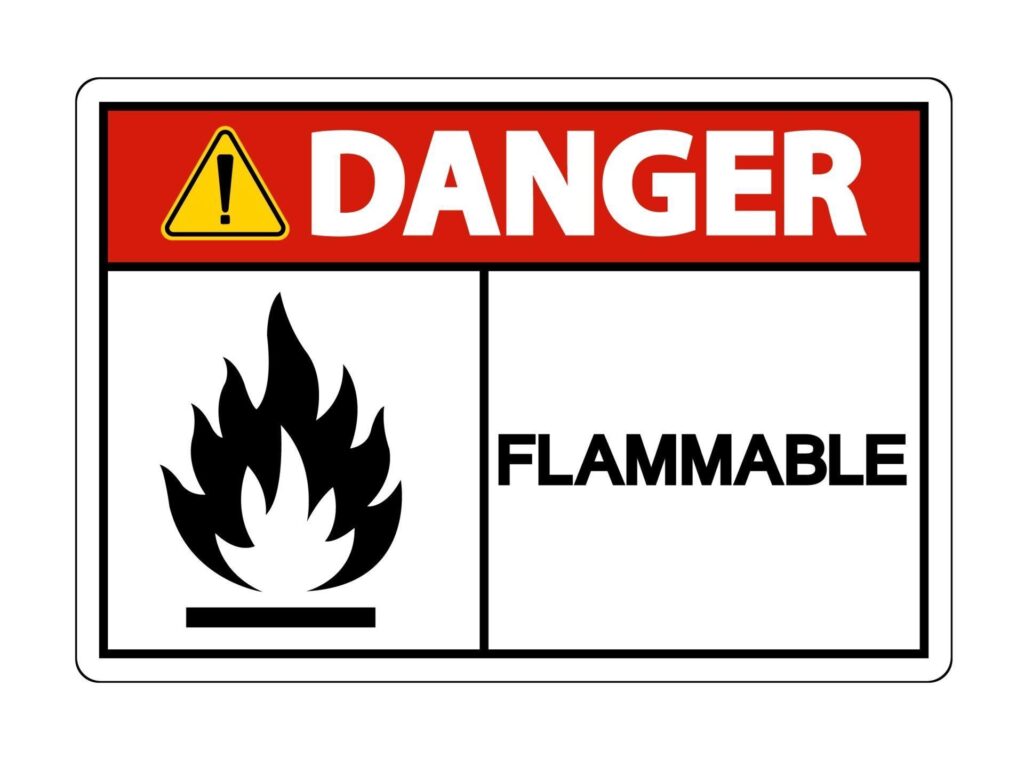“I receive a commission for purchases or clicks made through links in this post.”
What Is Acetone?
Acetone is commonly recognized as a colorless liquid also known as propanone. It’s a solvent used in the manufacture of plastics and other industrial products. Acetone is a metabolic byproduct that naturally occurs in humans. It’s an industrial solvent used in the production of plastics and other goods. A small amount of propanone may be used in household products, such as cosmetics and personal care items; it is most frequently used in the creation of nail polish removers.
Is Acetone Nail Polish Remover?
Acetone is the main component of many nail polish removers on the market today. This is primarily because nail polish is easily removed with a cotton ball or pad because acetone breaks it down. It’s widely used because it mixes easily with water and vaporizes faster in the air. Acetone is a popular product used in the textile industry. Degreasing wool and degumming silk is the primary goal for this product’s usage.
Why Should I Use Nail polish remover?
Acetone is very effective at removing nail polish, but it also has some benefits that other nail polish removers do not have. The scenario I’m about to describe has probably happened to the best of us. This might apply to both men and women. If this scene sounds similar to you, please raise your hand: You’ve just applied fresh silk wraps, acrylic tips, or anything similar to your nail bed. You may have worn them for a few days or weeks, and now they’re beginning to crack and chip.
That may be true for some, but perhaps you’ve realized it’s not your thing and you want them GONE! You’re either going to the salon to have them removed or you’re forced to do it yourself. Yikes, right? Well, not exactly. As scary as it sounds, removing acrylic nails is rather easy. And to help you out, we’ve created this blog post for many reasons. The first is to inform you about what products you will need, what they are for, and how to use them. How do you remove acrylic nails with acetone? Continue reading below for the answer.

What Products Will I need?
- Nail polish remover with or without acetone
- Nail polish remover with Acetone
- Cotton balls or cotton pads
- Bowl or pail to place hands
- Towel
- Nail clippers/Tweezers
- Nail file
- Petroleum jelly
- Aluminum foil
It is quite obvious that if you have applied a particular nail enamel, you might want to take it off after a while. Maybe for changing the color or design, or even when the old one starts to chip off. So, as easy as it is to apply nail enamel, it can sometimes be tough to remove it. Most nail enamels are stubborn and can be a hassle to get rid of once applied. With the popularity of the nail industry, certain techniques and products have been introduced to get rid of nail paint and enamel.
Here are some of the benefits of using acetone for nail removal:
- It is very effective at removing nail polish, even the most stubborn polishes.
- It dries quickly, so you do not have to wait long for your nails to be dry.
- It is relatively inexpensive, so it is a budget-friendly option.
- It is available in most stores, so you can easily find it.
How to Remove Acrylic Nails With Acetone:
Step 1: Clip
Clip the acrylic nails as short as possible.
Step 2: File
File away the topcoat, nail polish, or any color to avoid getting a mess all over your hands.
Step 3: Apply
Apply petroleum jelly to the skin surrounding the cuticles (this serves as a protective barrier). Next—similar to removing gel nail polish—soak cotton pads in acetone and place them on your nails.
Step 4: Wrap
Tear pieces of aluminum foil and wrap them around the tips of your fingers, keeping the cotton pads in place.
Step 5: Keep Nails wrapped
Let it sit for 25 to 30 minutes.
Step 6: Remove
Pull the aluminum foil gently, and the acrylic nail should come off with it. If you feel resistance, keep it wrapped for another five to seven minutes.
How to Remove Acrylic Nails Without Acetone
Step 1: Trim
Trim the acrylic nails as short as you can. Additionally, doing so will help avoid any potential harm or discomfort that could result from having nails that are too long.
Step 2: Pry
Using a pair of tweezers, use the tweezers’ sharp ends to gently pry the edges off.
Step 3: Pour
One cup of nail polish remover free of acetone should be poured into a bowl. Keep in mind that the remover will evaporate with time, so you’ll need to keep adding a few tablespoons.
Step 4: Soak
Spend 30 to 40 minutes soaking your nails in the remover.
Step 5: Remove
Use tweezers to carefully remove the nail after you feel it begin to loosen. If it is difficult to remove, soak for an additional five to seven minutes.

Hazards of Acetone For Nail Removal
Acetone is highly flammable but is generally recognized to have low acute and chronic toxicity. If inhaled, acetone could cause a sore throat or cough. Frequent use of acetone on nails can cause the whiteness of the cuticles just after the removal of nail polish and other skin problems around the nails.
- It can be drying to the skin and nails, so it is important to moisturize your hands and nails after use.
- It can be harmful if ingested, so it is important to keep it out of the reach of children and pets.
- It is flammable, so it should not be used near open flames.
Although acetone nail polish removers are known for the damage they cause to your nails and cuticles, they are still the most effective nail polish removers on the market. Also, their damage is no big concern, while other concerns are still on top of the list, including poor salon hygiene, allergic salon dermatitis, and UV lamps.
Until all these concerns are resolved, acetone is still in the back, and professionals will continue to use it. And as long as you are taking good care of your nails, there is no need to worry about it.
The U.S. Food and Drug Administration (FDA) has determined acetone is safe for use as an indirect food additive in adhesives and food-contact coatings and is regarded as a Generally Recognized as Safe (GRAS) substance at certain concentrations. Overall, acetone is a very effective and affordable way to remove nail polish. However, it is important to be aware of the potential drawbacks before using it.


3 thoughts on “The Best Way To Use Acetone To Remove Acrylic”